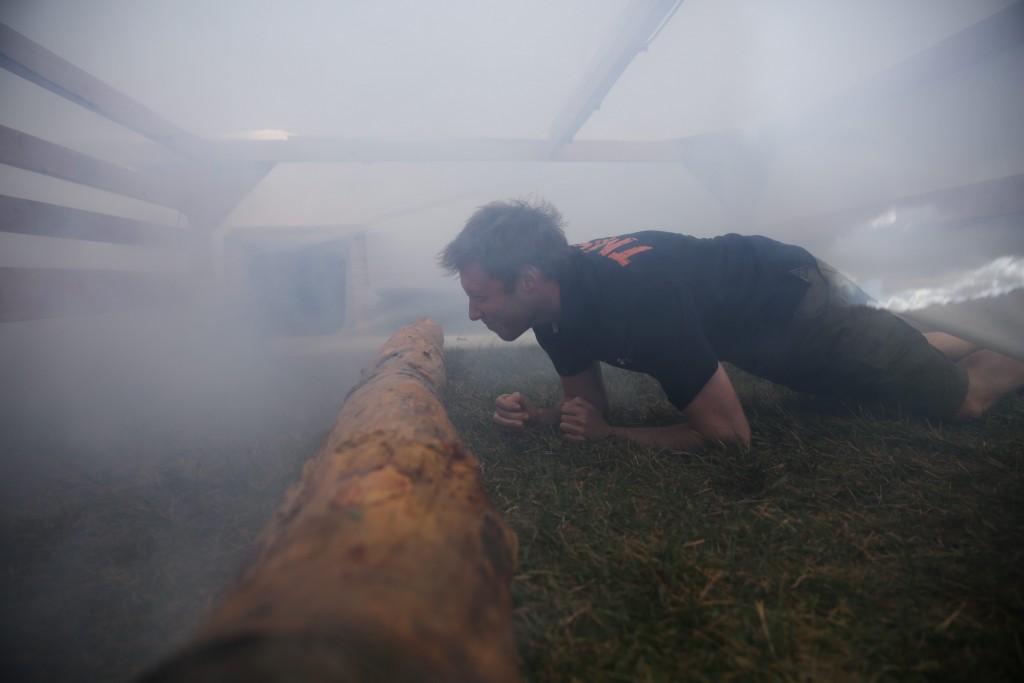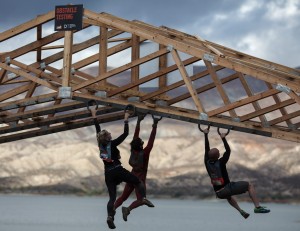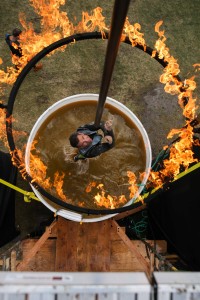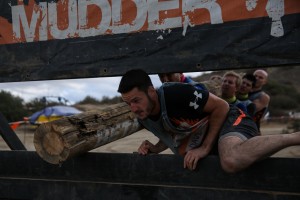“Tough Mudder is a team-oriented 10-12 mile (18-20 km) obstacle course designed to test physical strength and mental grit”
That is the description according to the Tough Mudder website.
Whether you’ve undertaken it or not, many of us know it as a completely bonkers mud run that contains 10 extreme obstacles to show how strong, willing and nutty you are.
This year, Tough Mudder boasts a whole set of either brand new or updated obstacles. Allowing for a refreshing course.
The Birth Canal is a new addition this year, where participants will crawl under a plastic sheet filled with water. Pushing their body weight into the ground as they army crawl their way through. Another one is Dead Ringer, where you use two rings and grapple your way off the ground to the other side. Much like monkey bars, but you have the rings.
The man behind all these wacky ideas is Nolan Kombol.
When asked about the safety of these obstacles, Nolan said: “There is an element of risk, you’re running over 10ft walls or through electrical wires.
“But we do work alongside a pretty robust medical team and a medical director who sits in house, he actually reviews all the plans of the obstacles.
“Everything goes through a pretty robust testing process… It’s my favourite thing to do each year”
There is a five step process to creating the Tough Mudder Obstacles. First stage is ideation, where the team sit down with a whiteboard and create a pool of 60 to 70 obstacles.
Next is the conceptualisation phase, where they work alongside the engineers to carve out the obstacles. That skims down the pool quite a lot, to about 40 to 50 obstacles.
Then it’s the alpha testing phase, this happens three months down the line after they have had time to review the plans and work with the medical staff. The alpha testing phase actually happens on a site outside the office. They build around 30 of the obstacles and Nolan handpicks his guinea pigs from the office to go try them out.
After two months of feedback and testing it then goes to beta testing. In which they build out a live course, last year’s was in Southern California. 200 participants were selected to test out 20 of the new obstacles they want to use.
At this point they’re pretty sure on which ones they’re going to be using, but still want their feedback anyway.

Everest 2.0
Finally the team then whittles it down to the 10 obstacles they want to use and take into Tough Mudder.
We caught up with Nolan, to ask him a few questions from the point of view of a first time runner:
Q) So Nolan, how would you describe Tough Mudder to someone who has never raced in it before?
A) I’d start off by saying it’s definitely not a race, for someone who has done endurance running before, it’s a completely different feeling and attitude. Typically people sign up as either with a group or as part of a personal challenge. It’s not only exhausting and challenging, but you can guarantee that they would be facing things that you wouldn’t have faced anywhere else.
Q) Tell us a little bit about what you do?
A) I’m the head of course design for Tough Mudder.
Q) What makes up the ingredients of a good obstacle?A) Something that provides a really unique experience and that they haven’t tried before, something that they want to tell all their friends about. We do provide obstacles that people don’t like, one for example is the electro shock therapy. You run through a curtain of hot electrical wires and multiple people do receive a shock as they go through it. That’s something that they want to be proud of overcoming, it proves they have balls. That for me is the success of a good obstacle.
Q) What would you say is the toughest obstacle you have created?
A) When we first did electro shock therapy, that was one of the first ones I really hesitated at. The first time I tried it, I got about 10ft away from the obstacle and stopped. I physically couldn’t throw myself into it. I don’t know why but it just seemed so unnatural to throw my body into it.
Nolan also spoke of Dead Ringer, which can be found here.
Also the Birth Canal too, see it here.
Q) Do the obstacles change yearly?
A) They do. In the past we would change two to four of the obstacles, this is the first where we have changed nearly every obstacle in the course.
Q) What kind of training is needed for this, if any?
A) I would definitely suggest training is needed. Certainly going out and putting in five to six miles, twice a week. Rain and colder weather can also be a factor, training on actual trails, not on pavement or treadmills but getting out and running some longer trail runs. I’d say the first is to get out there and get wet and muddy. Get used to running with your body half wet and caked in mud. You can also judge which footwear is the best this way too.
The courses do require a good amount of upper body strength. Which people may be unfamiliar with, but you may need to pull yourself up over a wall or use the monkey bars over water pit. So doing pulls ups, doing dips and then practice those sort of actions.
Q) … and what tips would you give to a first time runner when approaching an obstacle?
A) The first thing I’d do is pause, look at the obstacle and take a second to think about what you’re going to do. Talk to other people around you, a lot of people don’t understand how social the course can be. Take a look a look at how other people are doing it, tag someone and say ‘hey are you going up next’, would you mind giving me a hand. Nearly every obstacle has an element of teamwork.
Tough Mudder’s next UK even is in London and you can find it here.











